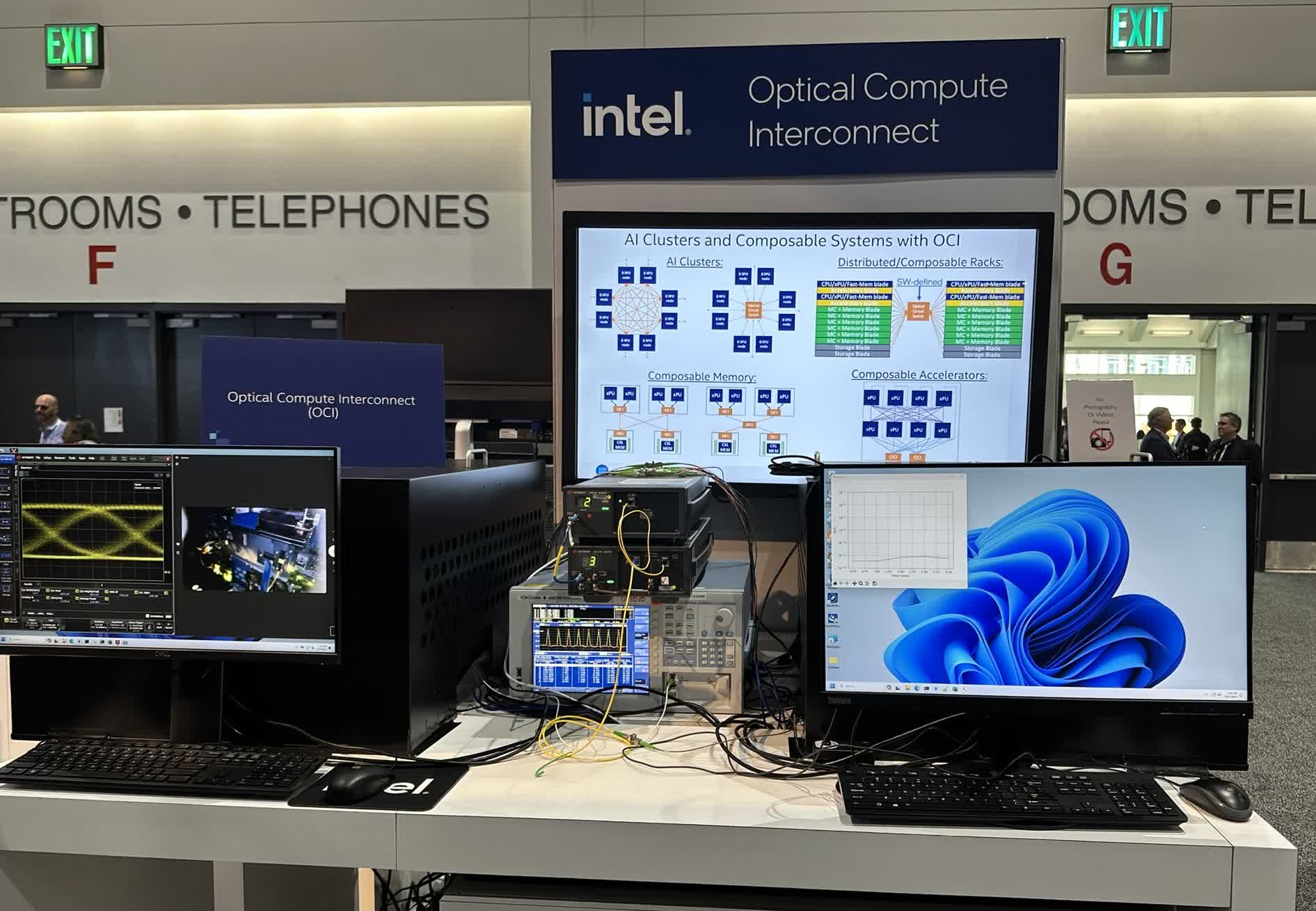The large image: Intel has developed a totally built-in optical compute interconnect (OCI) chiplet, which it compares to transitioning from horse-drawn carriages to vehicles and vans by way of knowledge transmission. The OCI addresses a niche in optical enter/output options, the place some do not ship sufficient attain whereas others have the attain however at too excessive an influence price.
On the Optical Fiber Communication Convention 2024, Intel demonstrated what it calls a revolutionary milestone in built-in photonics expertise for high-speed knowledge transmission: a totally built-in optical compute interconnect (OCI) chiplet co-packaged with an Intel CPU and operating reside knowledge. It’s designed to allow co-packaged optical enter/output (I/O) in rising AI infrastructure for knowledge facilities and high-performance computing functions.
Its entrance into the market coincides with the explosion of AI functions and the super want for bandwidth amid the present less-than-optimal sources of compute material, the corporate says. Compute material can use electrical I/O like copper interconnects, however these have quick reaches of about one meter or much less. Conversely, pluggable optical transceiver modules utilized in knowledge facilities and early AI clusters can enhance attain however at a value and energy degree that aren’t sustainable with the scaling necessities of AI workloads.
What the business wants, Intel maintains, is compute material that gives larger bandwidth throughout better distances whereas utilizing much less energy. That is the place OCI is available in.
It permits customers to combine co-packaged silicon photonics interconnect options into next-generation compute techniques. “Our OCI chiplet boosts bandwidth, reduces energy consumption, and will increase attain, enabling ML workload acceleration that guarantees to revolutionize high-performance AI infrastructure,” mentioned Thomas Liljeberg, senior director of product administration and technique within the Built-in Photonics Options Group.
The OCI chiplet leverages Intel’s silicon photonics expertise and integrates a silicon photonics built-in circuit (PIC), incorporating on-chip lasers and optical amplifiers, with {an electrical} IC. The OCI chiplet demonstrated at OFC was co-packaged with an Intel CPU however can be built-in into next-generation CPUs, GPUs, IPUs, and different system-on-chips (SoCs).

The demo included a transmitter (Tx) and receiver (Rx) connection between two CPU platforms over a single-mode fiber (SMF) patch twine. The CPUs generated and measured the optical Bit Error Charge (BER), and the demo showcased the Tx optical spectrum with eight wavelengths spaced at 200 gigahertz (GHz) on a single fiber, together with a 32 Gbps Tx eye diagram illustrating robust sign high quality.
The OCI is at present a prototype however helps as much as 4 terabits per second (Tbps) of bidirectional knowledge switch over distances of as much as 100 meters. It’s suitable with PCIe 5.0, facilitating integration into current PCIe-compatible infrastructure.
Intel additionally highlighted important energy financial savings, noting consumption of solely 5 pico-joules (pJ) per bit in comparison with roughly 15 pJ/bit for pluggable optical transceiver modules.

